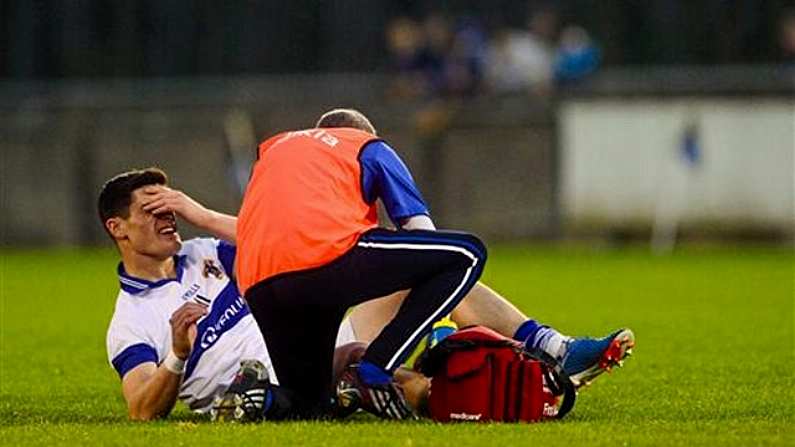There's never really a good time to suffer an injury. Ideally you'd love for it to happen in the off season but these things are almost always destined to happen midway through the season when the timing could not be worse.
Some of these injuries are so extensive that the hope of making a return before the end of a championship is unthinkable. But then there are others who incur something minor such as a strained hamstring or a sprained ankle which still gives them a fighting chance. And while they should feel somewhat relieved that all is not lost, there is another dilemma to confront.
While these athletes are strictly observing the rest, elevate and ice routine, the rest of the team are playing on and getting fitter meaning the injured player is on the backfoot when they come back.
But fear not, most of the time there are ways of retaining your fitness without impacting on an injured area. Here are four exercises you can still do when you're injured.
Swimming
This is a form of exercises that encompasses several different types of injury afflicted people. From sprained ankle sufferers to people with back pain, swimming is a brilliant way to engage with your fitness levels without aggravating the injured area. Swimming laps or running in the water will not only get your heart pumping, but it will also strengthen your body without having a negative impact on your joints. If you have ankle issues, wait for approval from your physio before doing any rigorous work in the pool.
Cycling
Similar to swimming, cycling is an exercise form that won't impinge on your knee or ankle joints nor will it attack any muscle strains. Athletes suffering from upper body ailments can also hop on the saddle as the energy needed to keep the bike in motion doesn't involve your arms. If you have an injury which could be implicated by gripping a bike, try to use a stationary one in the gym.
Core Work
Contrary to popular belief, athletes don't have to rely on cardio work in order to get in shape. A programme of core exercises has become an essential part of preparation for modern day sports people. And this static form of exercise becomes all the more important for someone recovering from injury. The plank exercise can be very useful for people suffering from back pain, particularly those with problems in their upper back muscles. Similarly push-ups and sit-ups can also aid in recovery from chest, shoulder, arm and back pain while also toning up your physique.
Cross Trainer
If swimming isn't your bag and sitting on a bike is too boring, you might find the cross trainer is a better fit for you. Americans call this the elliptical and this exercise machine is found in most gyms. This is the closest thing to replicating a running motion which is good news for long distance runners nursing an injury at the moment. The cross trainer isolates the muscle groups to ensure you get a thorough workout as well as imposing any trauma on your feet, back or arms. Users of the cross trainer will also improve their bone strength and lung capacity.
















